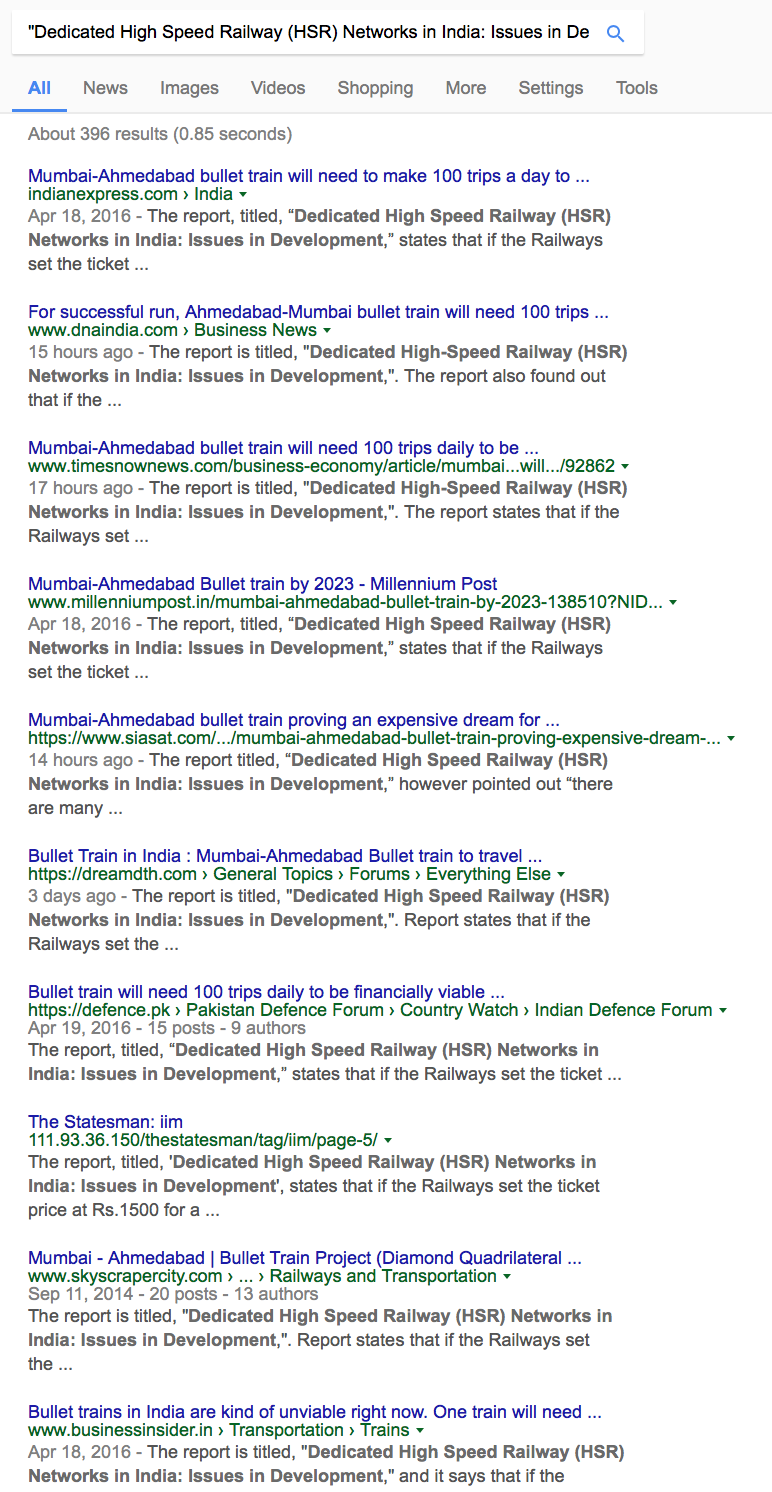☛ Indian Railways decides to enforce baggage limits
The Times of India reports:
As a result of numerous complaints regarding excess baggage being towed into train compartments, the Indian Railways has decided to strictly enforce its over-three-decades-old baggage allowance rules, which will see passengers paying up to six times the stipulated amount as penalty, if caught travelling with overweight luggage, an official said today.
I never even knew that these baggage rules existed. All these years, I’ve simply assumed that there were no formal baggage limits; that space constraints and being reasonable to fellow passengers is all that stops people from carrying waaay too much stuff with them on to trains. Unfortunately, people often do carry too much stuff with them, and to the level of straining and breaking limits of reason.
Which is why the rule enforcement itself, to me, is entirely justified. Even in the little travel that I have done via Indian Railways in the recent past, people carrying way too much luggage, both in quantity and physical size, is way too common for comfort.
The important question, though, is how much luggage is allowed? After all, the railways is used in a vast majority by people for whom expense is a major factor.
According to the prescribed norms, a sleeper class and a second class passenger can carry luggage weighing 40 kg and 35 kg respectively without paying any extra money and a maximum of 80 kg and 70 kg respectively by paying for the excess luggage at the parcel office. The excess luggage would have to be put in the luggage van.
[…]
For example, if a passenger is travelling 500 km with luggage weighing 80 kg in the sleeper class, he can book his excess baggage of 40 kg for Rs 109 in the luggage van.
[…]
Similarly, an AC first class passenger can carry 70 kg of luggage for free and a maximum of 150 kg, after paying a fee for the excess 80 kg.
An AC two-tier passenger can carry 50 kg of luggage for free and a maximum of 100 kg by paying a fee for the excess 50 kg.
Only 35-40kg for the second class passenger? That seems a little on the lower side. Barely a couple of suitcases, perhaps? In our international travel to and from the USA we’re allowed 46kg in two checked in suitcases, along with additional cabin baggage; surely a railway compartment should be able to accommodate more per passenger? The limits for the AC classes seem a little more reasonable, but still low considering that fewer passengers occupy the same compartment area.
The cost for extra baggage doesn’t seem too bad either. About Rs. 100 for essentially doubling the baggage allowance is hopefully okay, considering prices of other commodities, although I hope the baggage charges increase with the class of tickets. The cheapest tickets should really also have the cheapest excess baggage charges, considering the budget conscious traveler.
I’m most concerned, though, with two things. One, the excess luggage is to be placed in a separate luggage van. (Come to think of it, I’ve always known these luggage vans exist on trains. I always assumed they were for freight or oversized luggage. Huh.) I’m guessing the luggage van is perfectly safe with no fear of theft, but I’m also certain many, many passengers will take a long time to be comfortable with the idea of their bags not being right next to them. (Although, side benefit: if the bags aren’t just lying around in the compartment, they’re safer from theft.)
Two, they say they will “enforce” the law by random checks. This is bad, especially in India, where: (a) this situation is ripe with bribing opportunities, and (b) random checking introduces the concept of fairness between travelers who got caught and who didn’t. I really hope they figure out a more robust way of executing this.
In concept, the baggage allowance idea seems reasonable, but I hope they do a good job of the current idea, and I really hope they revisit the current ideas and update them based on feedback and usage data. The Indian Railways is a lifeline in India, and things like this can have a major effect either way.
∞